King Angelfish, Holacanthus passer
 King Angelfish, Holacanthus passer, Juvenile. Underwater photograph taken in coastal waters of the greater Los Cabos area, Baja California Sur, May 2018. Photograph courtesy of Bob Hillis, Ivins, Utah.
King Angelfish, Holacanthus passer, Juvenile. Underwater photograph taken in coastal waters of the greater Los Cabos area, Baja California Sur, May 2018. Photograph courtesy of Bob Hillis, Ivins, Utah.
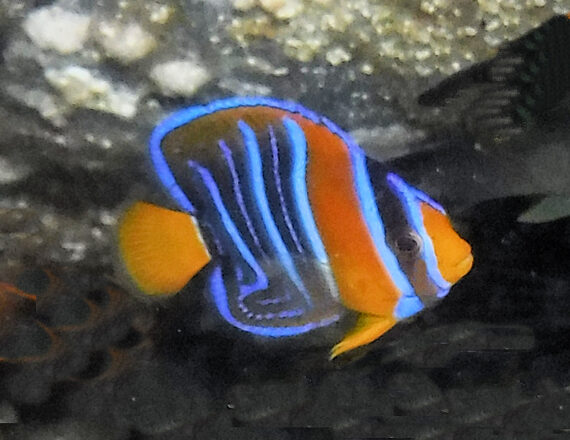 King Angelfish, Holacanthus passer, Juvenile. Underwater photograph taken in coastal waters of the greater Loreto area, Baja California Sur, October 2024. Photograph courtesy of Bob Hillis, Ivins, Utah.
King Angelfish, Holacanthus passer, Juvenile. Underwater photograph taken in coastal waters of the greater Loreto area, Baja California Sur, October 2024. Photograph courtesy of Bob Hillis, Ivins, Utah.
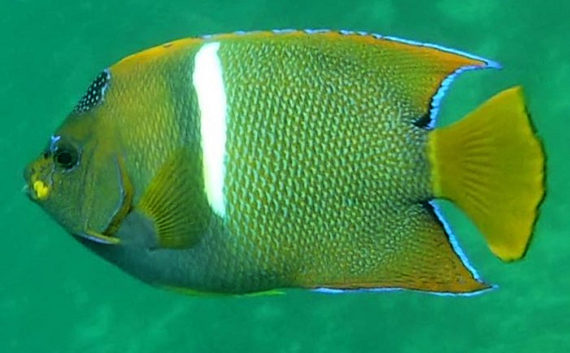 King Angelfish, Holacanthus passer, Juvenile. Underwater photograph taken in Zihuantanejo Bay, Guerrero, March 2018. Photograph courtesy of Ron Woheau, Zihuantanejo.
King Angelfish, Holacanthus passer, Juvenile. Underwater photograph taken in Zihuantanejo Bay, Guerrero, March 2018. Photograph courtesy of Ron Woheau, Zihuantanejo.
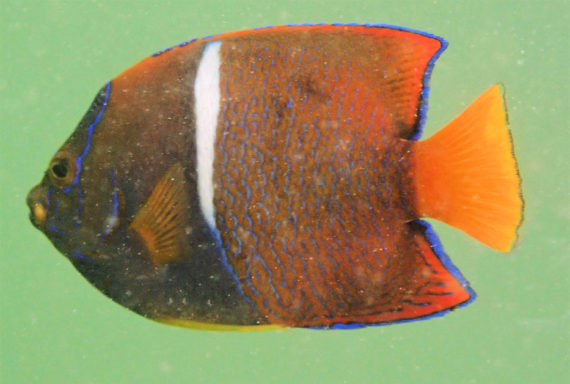 King Angelfish, Holacanthus passer, Sub-adult. Underwater photograph taken in Zihuantanejo Bay, Guerrero, November 2018. Photograph courtesy of Ron Woheau, Zihuantanejo.
King Angelfish, Holacanthus passer, Sub-adult. Underwater photograph taken in Zihuantanejo Bay, Guerrero, November 2018. Photograph courtesy of Ron Woheau, Zihuantanejo.
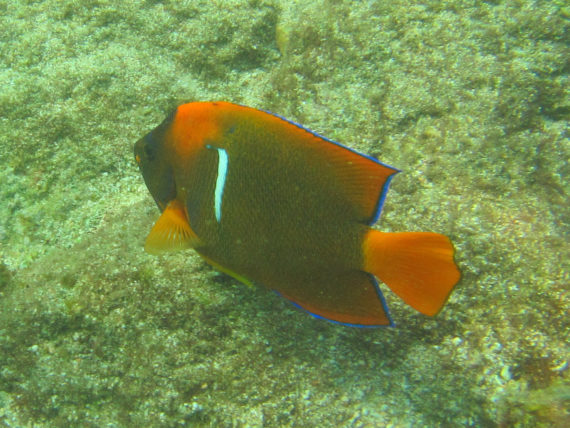 King Angelfish, Holacanthus passer, Sub-adult. Underwater photograph taken in coastal waters of the greater Los Cabos area, Baja California Sur, May 2018. Photograph courtesy of Bob Hillis, Ivins, Utah.
King Angelfish, Holacanthus passer, Sub-adult. Underwater photograph taken in coastal waters of the greater Los Cabos area, Baja California Sur, May 2018. Photograph courtesy of Bob Hillis, Ivins, Utah.
 King Angelfish, Holacanthus passer. Fish provided by the commercial fishermen of the greater Los Cabos area, Baja California Sur, June 2009. Length: 25 cm (9.8 inches).
King Angelfish, Holacanthus passer. Fish provided by the commercial fishermen of the greater Los Cabos area, Baja California Sur, June 2009. Length: 25 cm (9.8 inches).
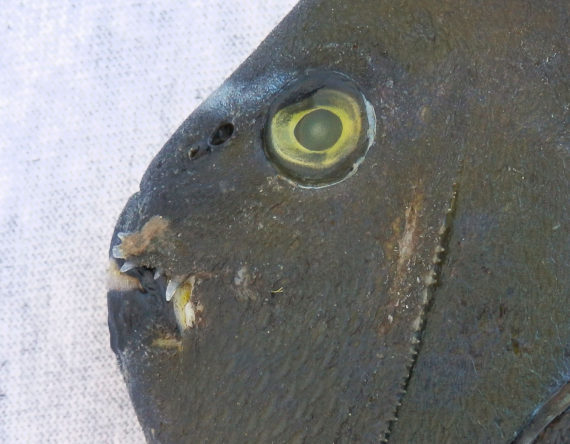 King Angelfish, Holacanthus passer. Close up of the mouth with forward extensions of the lachrymal bone which is most likely utilized to scrape algae off of rocks.
King Angelfish, Holacanthus passer. Close up of the mouth with forward extensions of the lachrymal bone which is most likely utilized to scrape algae off of rocks.
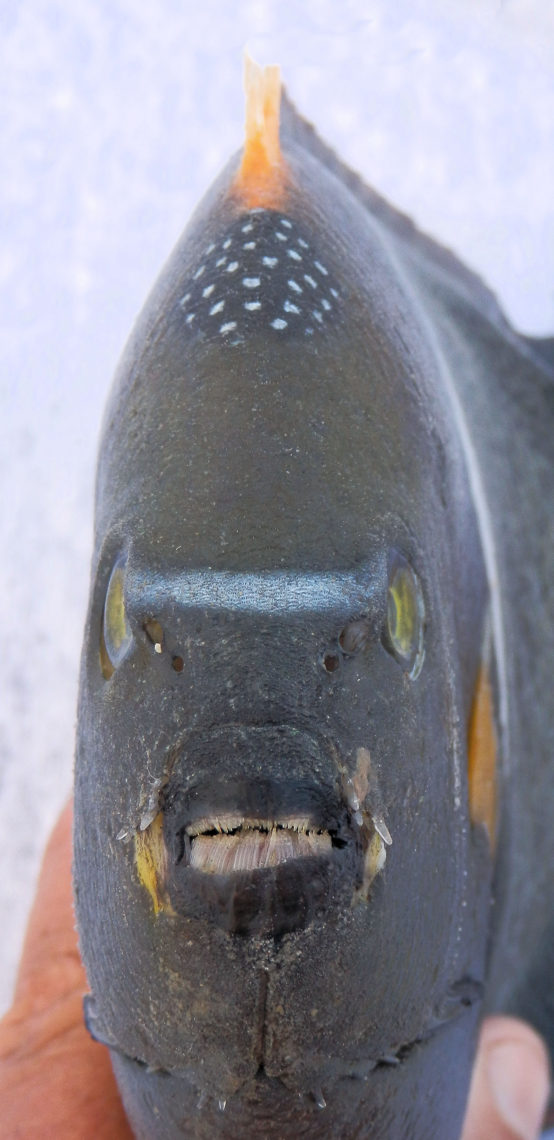
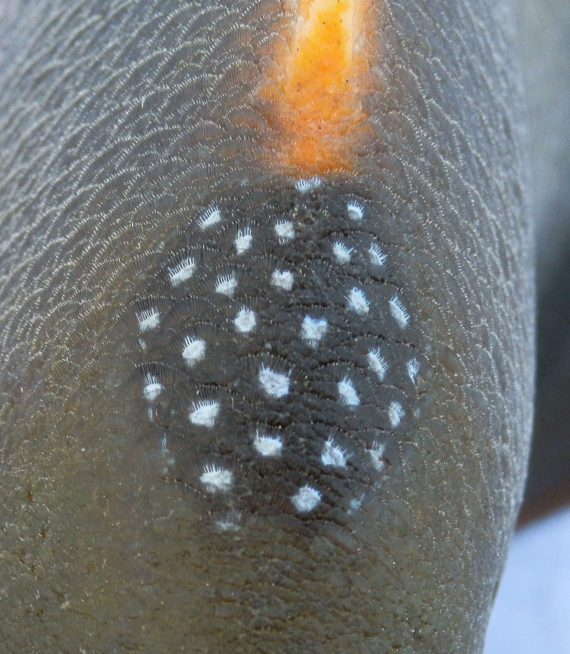 King Angelfish, Holacanthus passer. An interesting head shield that is very similar to the one found on the Queen Angelfish, Holocanthus ciliarus, of the Atlantic Ocean.
King Angelfish, Holacanthus passer. An interesting head shield that is very similar to the one found on the Queen Angelfish, Holocanthus ciliarus, of the Atlantic Ocean.
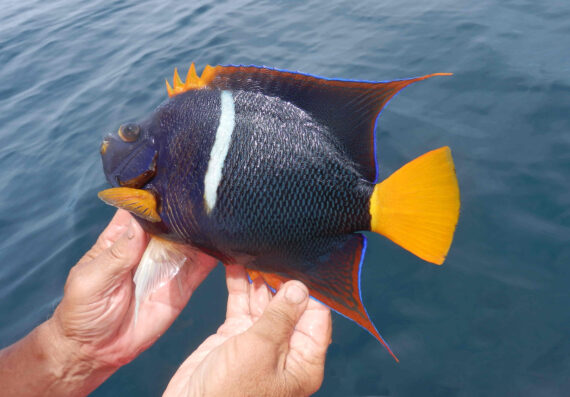 King Angelfish, Holacanthus passer. Fish caught from coastal waters off Loreto, Baja California Sur, June 2024. Length: 28 cm (11 inches).
King Angelfish, Holacanthus passer. Fish caught from coastal waters off Loreto, Baja California Sur, June 2024. Length: 28 cm (11 inches).
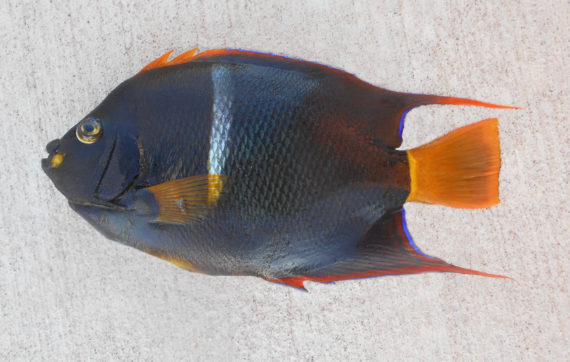 King Angelfish, Holacanthus passer. Fish caught from coastal waters off Loreto, Baja California Sur, October 2019. Length: 28 cm (11 inches).
King Angelfish, Holacanthus passer. Fish caught from coastal waters off Loreto, Baja California Sur, October 2019. Length: 28 cm (11 inches).
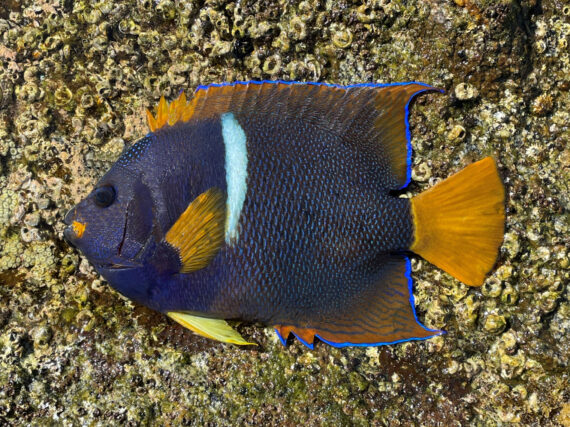 King Angelfish, Holacanthus passer. Fish caught from within the Puerto Los Cabos Marina, Baja California Sur, April 2022. Length: 30 cm (12 inches). Catch, photograph and identification courtesy of Luke Ovgard, Klamath Falls, Oregon.
King Angelfish, Holacanthus passer. Fish caught from within the Puerto Los Cabos Marina, Baja California Sur, April 2022. Length: 30 cm (12 inches). Catch, photograph and identification courtesy of Luke Ovgard, Klamath Falls, Oregon.
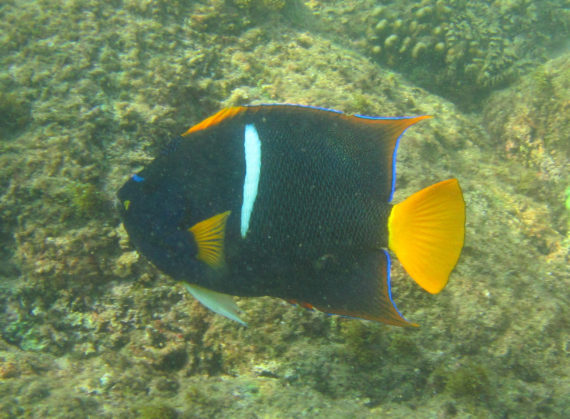 King Angelfish, Holacanthus passer. Underwater photograph taken in coastal waters of the greater Los Cabos area, Baja California Sur, May 2018. Photograph courtesy of Bob Hillis, Ivins, Utah.
King Angelfish, Holacanthus passer. Underwater photograph taken in coastal waters of the greater Los Cabos area, Baja California Sur, May 2018. Photograph courtesy of Bob Hillis, Ivins, Utah.
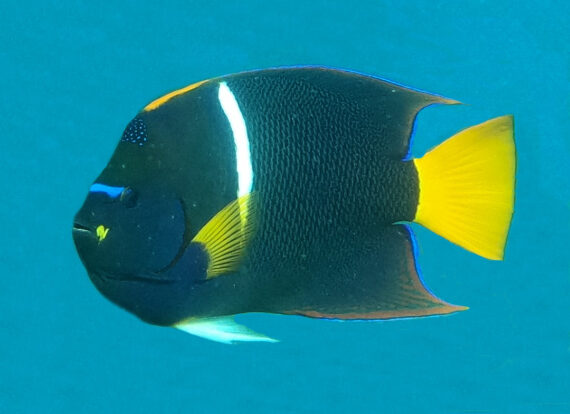 King Angelfish, Holacanthus passer. Underwater photograph taken in coastal waters of the greater Loreto area, Baja California Sur, October 2024. Photograph courtesy of Bob Hillis, Ivins, Utah.
King Angelfish, Holacanthus passer. Underwater photograph taken in coastal waters of the greater Loreto area, Baja California Sur, October 2024. Photograph courtesy of Bob Hillis, Ivins, Utah.
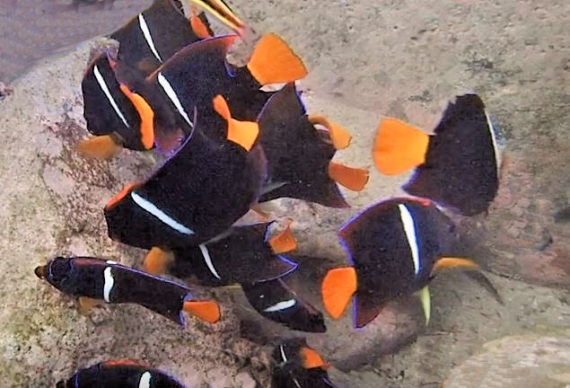 King Angelfish, Holacanthus passer. Underwater photograph taken in Zihuantanejo Bay, Guerrero, March 2018. Photograph courtesy of Ron Woheau, Zihuantanejo.
King Angelfish, Holacanthus passer. Underwater photograph taken in Zihuantanejo Bay, Guerrero, March 2018. Photograph courtesy of Ron Woheau, Zihuantanejo.
The King Angelfish, Holacanthus passer, is a member of the Angelfish or Pomacanthidae Family, and is known in Mexico as ángel real. Globally, there are eleven species in the genus Holocanthus, of which five are found in Mexican waters, three in the Atlantic and two in the Pacific Ocean.
The King Angelfish has a deeply compressed rectangular shaped body and can vary significantly in color. The adult King Angelfish have a dark blue gray coloration with one narrow vertical white band behind the gill covers, yellow-orange caudal and pectoral fins, and transparent pelvic fins. They also have a distinguishing orange spot at the corner of the mouth. In stark contrast the juveniles are multicolored, with a series of stunningly colored vertical stripes, which follow this pattern (starting at the head): yellow, blue (narrow), brown (through the eye), blue (narrow), orange (broad), white, then five dark brown stripes separated by narrow blue lines and a narrow blue line circling the entire body. These fish have a small mouth with brush-like teeth; their gill covers have a long spine attached. They also feature a single continuous dorsal fin with 14 spines and 16 to 18 rays. Their anal and dorsal fins end in filaments and their caudal fins are straight. Their bodies are covered with rough scales.
The King Angelfish reside over and within rocky and coral reefs where they are fairly common at depths up to 79 m (260 feet). Juveniles are frequently found in coastal tidal pools. Adults reach a maximum of 36 cm (14.2 inches) in length. They feed primarily on plankton and sponges. As of January 1, 2024, the International Game Fish Association world record stood at 0.45 kg (1 lbs 0 oz) with the fish caught in coastal waters off Buena Vista, Baja California Sur, July 2019. The King Angelfish The Acapulco Damselfish is poorly studied with very limited information available about their lifestyle and behavioral patterns including specific details on age, growth, longevity, movement patterns, diet, habitat use, and reproduction.
The King Angelfish is a resident of all Mexican waters of the Pacific Ocean with the exception that they are absent from the northern portions of the Sea of Cortez and from along the northwest coast of Baja.
The King Angelfish is an easy fish to identify due to their unique coloration and are therefore cannot be easily confused with other species, noting that they are somewhat similar to juvenile Clarion Angelfish, Holocanthus clarionensis (lack white bar behind the gill cover).
From a conservation perspective the King Angelfish is currently considered to be of Least Concern, with stable wide ranging distribution. They are of interest to scuba divers, being fairly abundant in certain parts of the Sea of Cortez. They are not a targeted species by recreational anglers and when caught are a typical “catch and release” and only retained by subsistence fishermen.